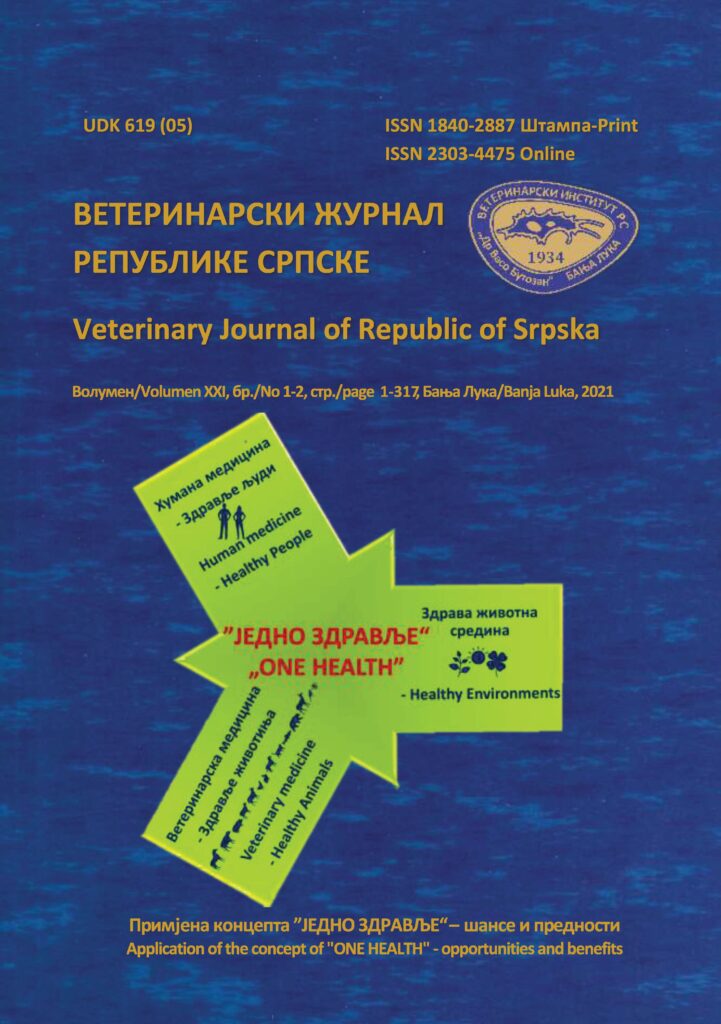REVIEW OF MICROBIOLOGICAL ANALYSIS OF DRINKING WATER FOR ANIMALS IN THE REPUBLIC OF SRPSKA (BOSNIA AND HERZEGOVINA) DURING THE PERIOD 2018-2020.
DOI:
https://doi.org/10.7251/VETJEN2101037GAbstract
One of the major challenges for all in the 21st century is safe drinking water and the microbiological control of drinking water should be the norm everywhere. Many infectious diseases of animals and humans are transmitted by water contaminated with human and animal excrements. The production and distribution of microbiologically safe drinking water should be a non-negotiable goal for water companies with the prospect of providing the same water quality to all consumers. This can only be achieved by adequate monitoring and control of microbial processes during water treatment and distribution. The material represented drinking water samples originating from animal farms at the territory of the Republic of Srpska (Bosnia and Herzegovina) collected in the period of 2018-2020. A total of 645 samples were examined. The aim of this study was to determine the microbiological status of drinking water for animals intended for human consumption in the Republic of Srpska (Bosnia and Herzegovina), in order to analyse the risks to animal health. BAS EN ISO 6222, BAS EN ISO 7899-2 and BAS EN ISO 9308-1/A1 methods were used for microbiological analyses of drinking water samples. The obtained results showed that one quarter of drinking water for animals are microbiologically incorrect. The analysis revealed a significantly higher number of unsatisfactory samples of well water in relation to the water supply system. The obtained results indicate fecal contamination of water, especially with intestinal enterococci and coliforms, and less with E. coli.

